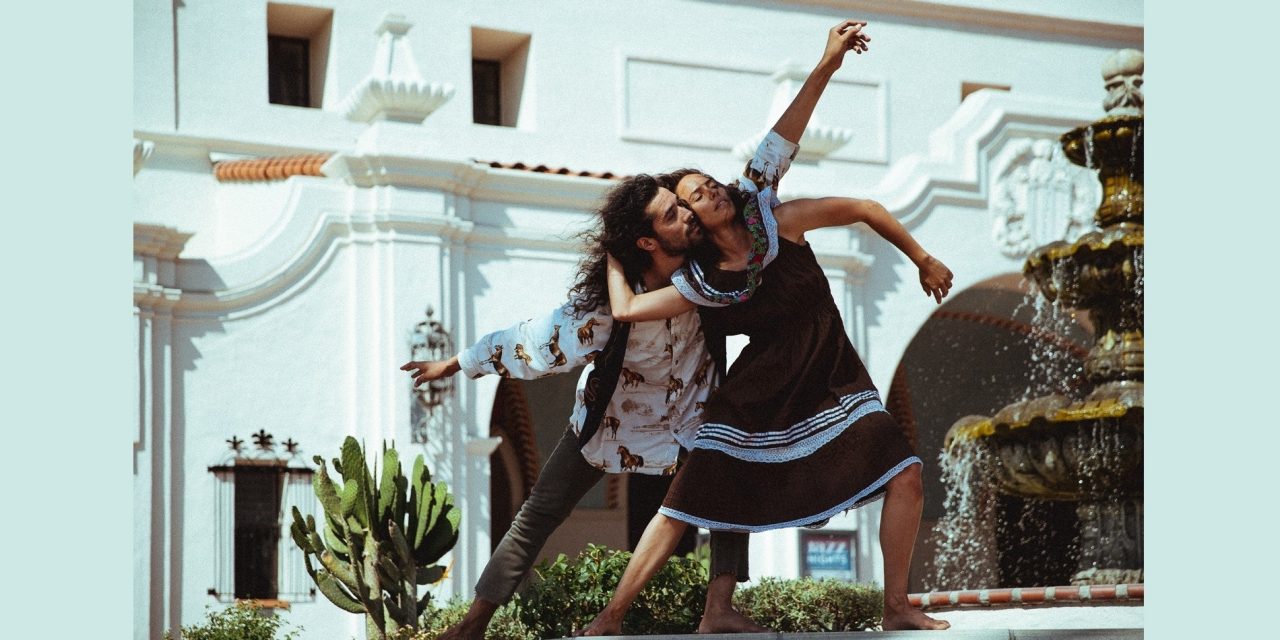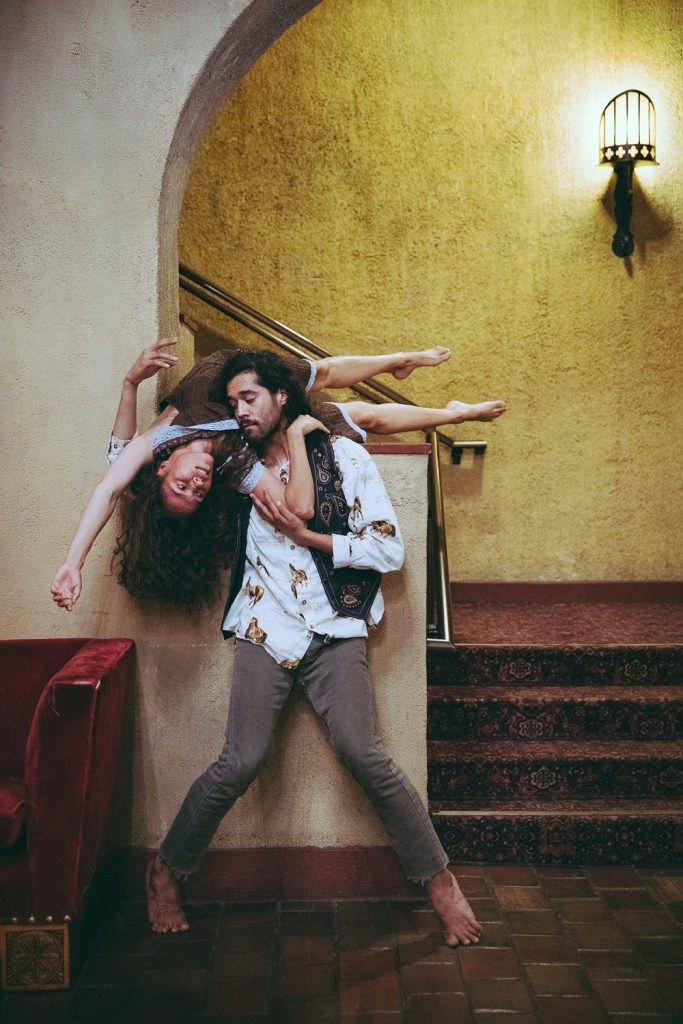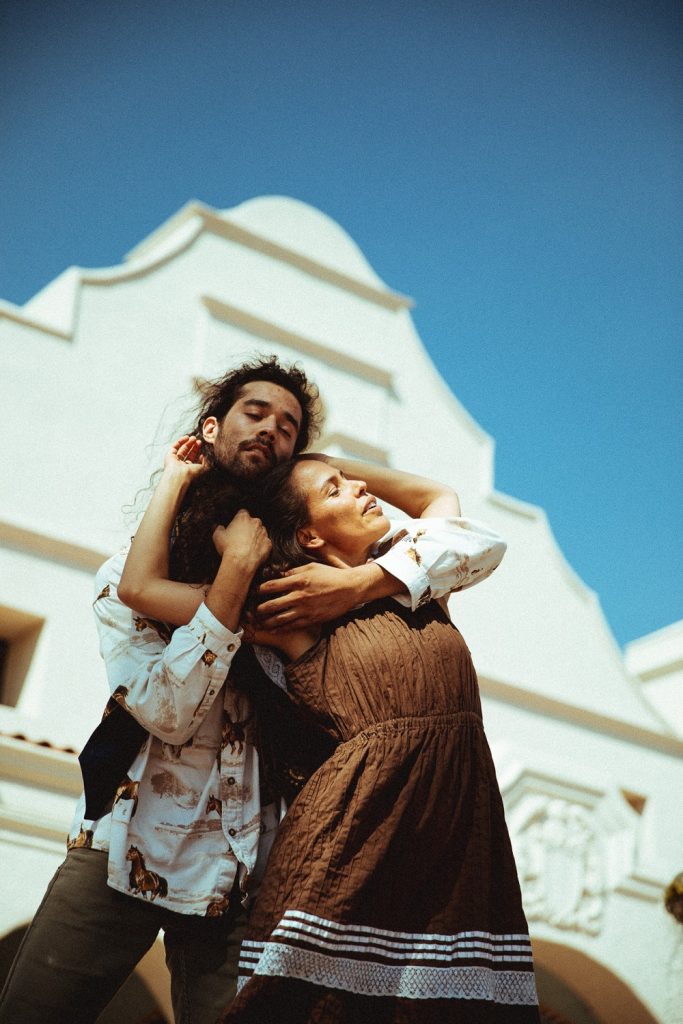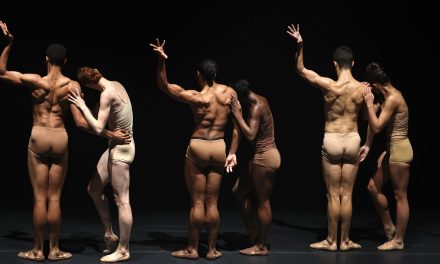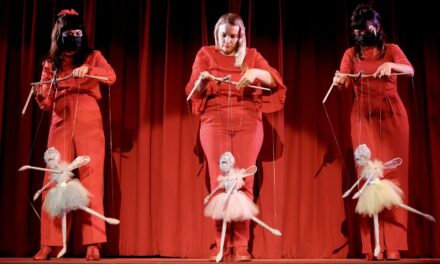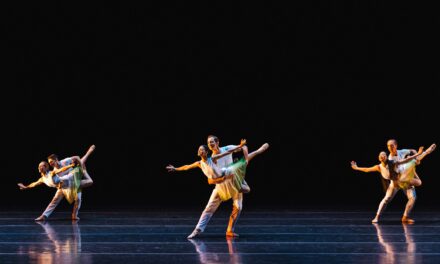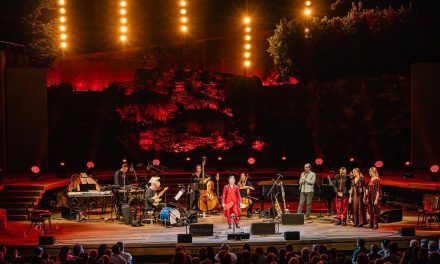Sunday, September 23, 2018
San Gabriel Mission Playhouse
Ramona, is an allegory originally written in 1884 in novel form by American Novelist, Helen Hunt Jackson. Her hope was to address the incredible racial discrimination of the Native Americans suffered at the hands of the Westward moving settlers. Because of its popularity, Jackson’s novel had more than 300 printings, was adapted five times for film and performed annually outdoors since 1923.
At the stunning San Gabriel Mission Playhouse, on a clear breezy evening, Heidi Duckler-Choreographer/Director and visionary, along with her engaging company, has realized this morality play in a site specific movement piece. It bridges the difficult life and journey of the mixed-race Scots-Native American orphan girl, Ramona.
For approximately two hours we are transformed and carried into 1800’s California with the strains of a live Spanish Guitarist, Gabriel Deutsch, the sweet warmth of the Violinist Israel Heller, and the indigenous instrumentation of Chris Garcia starting in the lovely courtyard of the San Gabriel Mission Playhouse. Like a camera panning cross the garden and flag stoned patio, we are introduced to the frenetic and busy Foster Mother, Señora Gonzaga Moreno, played by the tall ample-bodied Roberto Lambaren. Foster Mother Moreno is very busy doing her daily chores while chiding, harassing, and correcting Ramona, not one of her favorite children, who eventually finds herself on the lip of the courtyard fountain attempting to escape the onslaught, and intermittently accompanied by wandering goats, Spanky and Pippin. The animals then guide us into the antechamber of the stucco walled theatre with its Rot-Iron balconies.
Duckler then integrates and delights us with a playful duet on the antechamber’s balcony with the captivating and youthful Ramona, played by Rosanna Tavarez and her lithe Foster Brother- Felipe Moreno, Played by Rafael Quintas. It is a lovely mixture of gymnastics, hide-and-go-seek, and forbidden attraction. The activity then morphs into a duet with her lover and eventual husband, played by the handsome and compelling Lenin Fernandez. Snake-like, they trade places on the balcony, climbing over and under, weaving their bodies together, opening to each other, eventually moving away and disappearing from view as Felipe looks back longing for his Foster sister.
Our travels then lead us to the inside of the old Spanish painted stucco theatre, the courtyard where indigenous rhythms and music haunt us in the darkened, fenced in central garden, where approximately 12 dancers break into groups of two’s and three’s, moving, arching, and rolling in tandem in the dark, barely lit, symbolic town; it’s pulsating with live indigenous rhythms and music. This meditative journey, as we walk quietly away from the town’s activity to the darkened hallways of the theatre, are met with an image of a menacing tall male form, played by the powerful Ryan Walker Page, so reminiscent of Death in the Kurt Jooss’, The Green Table. The sounds that come from this apparition, echoes the future of things to come. We feel the threat as we quietly move passed and around him, and into spaces and aisles of the theatre to become part of the landscape. It is a chilling foreshadowing of the difficult life and route of the lover’s plight.
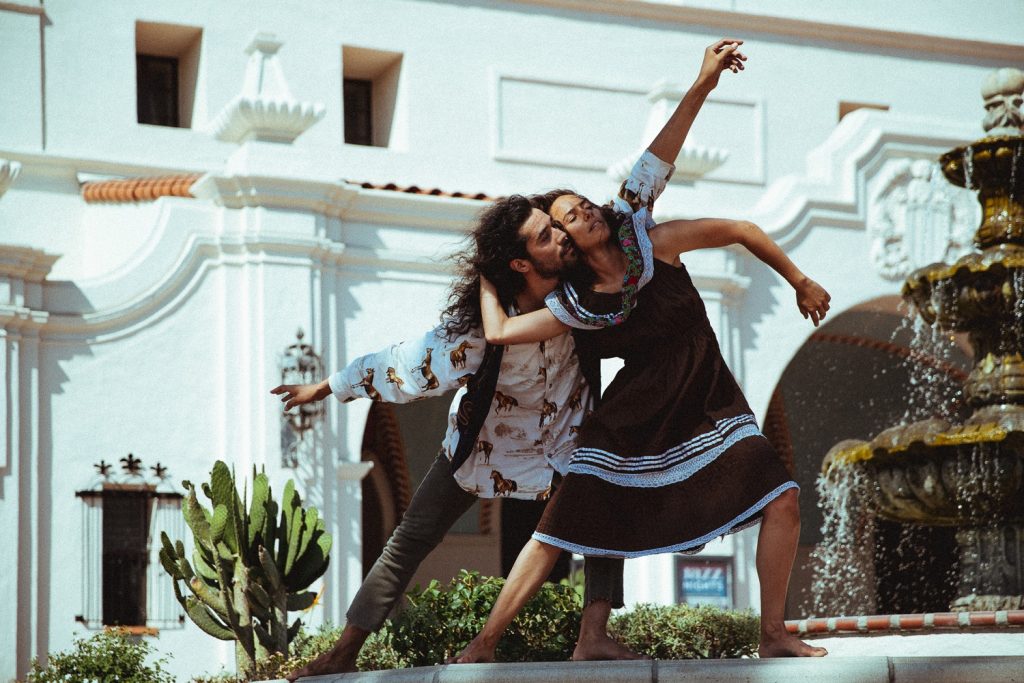 We follow the escape of our characters, as they move over and under seats as if hiding, drowning, and coming up for air, foretelling the chilling conclusion. Our journey with Ramona and her husband, leads us all to participate in the discovery of their love, their pain, their tragic deaths and rebirth. All of this told in unique and human movement. Duckler uses, with economy, the physical environment, melding the bodies to the forms around them. With her staging, we become witnesses to the jailing of Ramon and lover, and the massacre, and subsequent demise of the town folk. We experience the shocking murder of her husband by the powerful Walker Page from our viewpoint on the stage. She uses site lines and lack of them to hide and reveal love and violence in a stunning and intriguing hide-and seek lyricism and brutality.
We follow the escape of our characters, as they move over and under seats as if hiding, drowning, and coming up for air, foretelling the chilling conclusion. Our journey with Ramona and her husband, leads us all to participate in the discovery of their love, their pain, their tragic deaths and rebirth. All of this told in unique and human movement. Duckler uses, with economy, the physical environment, melding the bodies to the forms around them. With her staging, we become witnesses to the jailing of Ramon and lover, and the massacre, and subsequent demise of the town folk. We experience the shocking murder of her husband by the powerful Walker Page from our viewpoint on the stage. She uses site lines and lack of them to hide and reveal love and violence in a stunning and intriguing hide-and seek lyricism and brutality.
Ramona’s heartbreak at burying her husband, and eventually her implacable Foster mother, leads to a transformational and spiritual conclusion, which Duckler so eloquently expresses in the remarkably well organized and well-designed staging and choreography. She guides the audience’s attention from the vantage point of being a part of the funeral procession of Señora Moreno. This makes the audience swivel to participate in this shrouded ritual. As with her dancers, she puts us all through our own physical journey, and allows us to experience life through the eyes and feelings of the characters we have come to care about.
This is a “happening” that connects us to our past, and warns us of our future. It is a moving retrospective uniquely inviting us to feel, with wonder, every scene of this remembrance. It is memorable and well worth the journey.
For more information about the Heidi Duckler Dance Theatre, click here.
Featured image: Heidi Duckler Dance Theatre -Lenin Fernadez, Rosanna Taravez in Ramona – Photo: Mae Koo

